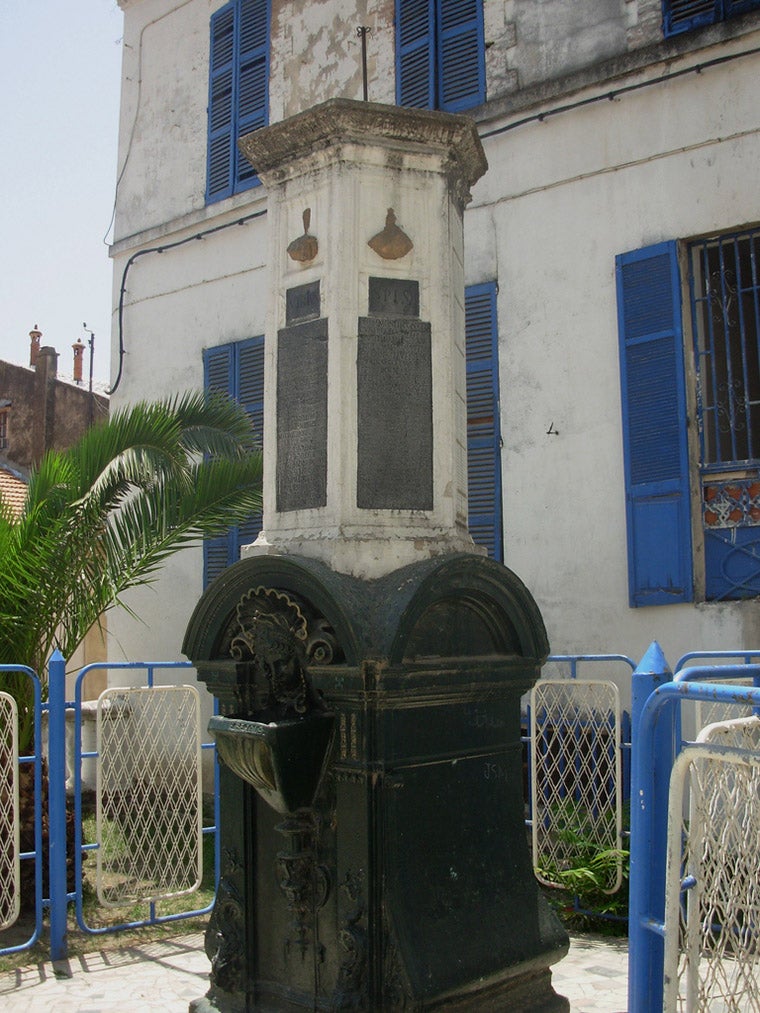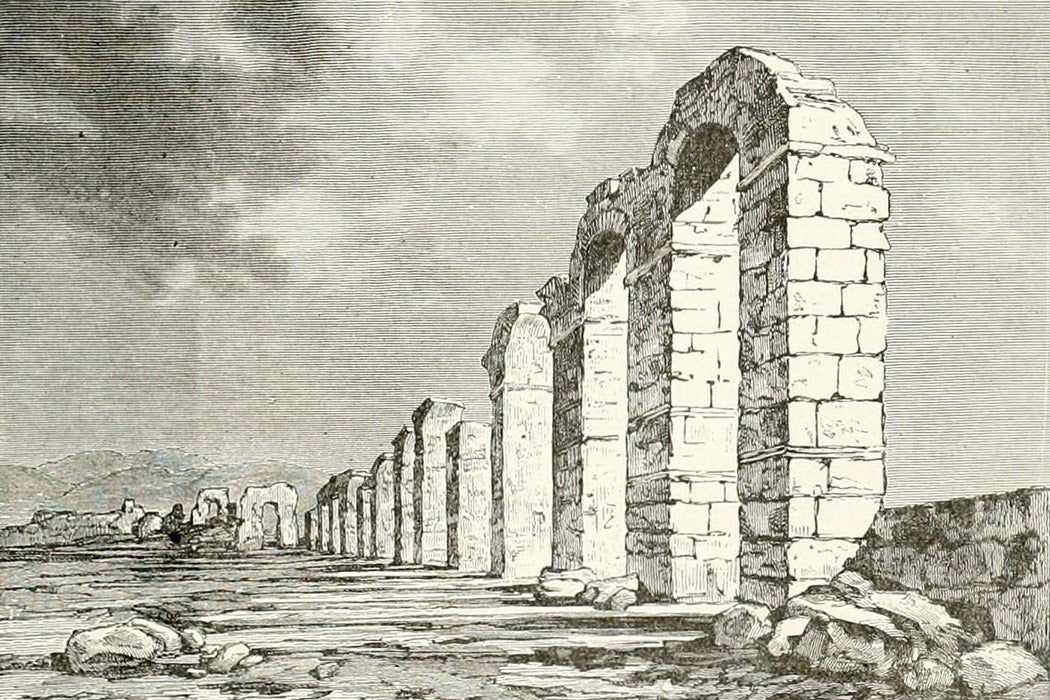The ruins of architectural marvels that still dot the former Roman Empire can seem almost superhumanly crafted. But as historian Serafina Cuomo writes, Rome’s monuments and public works were built through the labor of actual human beings—and, like today, unexpected problems could turn a straightforward construction project into a chain of expensive frustrations.
In her study, Cuomo, a scholar of ancient mathematics and technology, focuses on a hexagonal stone pillar, or cippus, inscribed with a set of narratives and letters concerning the construction of an aqueduct in the town of Saldae (modern Bejaïa, Algeria). The saga begins around 137 CE, when an engineer named Nonius Datus was brought in to draft plans for a water conduit drawing on natural springs about fifteen miles from the town.
Datus returned home after finishing the plans, believing his part of the job was done. He was wrong. Of the various issues that would plague the project, the biggest headache occurred in the early 150s, when a desperate letter from the provincial administrator in charge of the project brought the engineer back to Saldae.
Upon arriving, Datus (who had “escaped naked and wounded” from a bandit attack en route) found the workers “crying over a tunnel, uncertain about the work, and thinking about abandoning it.” A mountain stood between the town and the aqueduct’s source, necessitating a quarter-mile-long tunnel. Datus had specified the exact locations of each end of the tunnel in his plans; the idea was that separate groups of workers would excavate from each end and meet in the middle. However, as Datus tells us,
It became clear that the segments that had been dug departed from a straight line, to the point where the upper segment inclined to the right and was turned towards the south, while the lower one similarly inclined to its right to the north; therefore both parts, having abandoned the straight line, were going astray.
Datus used his technical and managerial skills to get the project back on track, and within a few years Saldae’s aqueduct was finally inaugurated, more than a decade after work began.

Known since 1866, Datus’ tale has been seen by historians “both as an example of Roman efficiency, and of Roman inefficiency,” according to Cuomo. But why was the inscribed cippus created in the first place?
Weekly Newsletter
For an answer, Cuomo suggests we look to the three female busts carved above the inscriptions. Each represents a specific ideal: Endurance, Courage, and Hope. The first two, Cuomo explains, speak to Datus’ pride in his ability to overcome obstacles through hard work—a virtue not often celebrated in elite Roman culture, where leisure was the ultimate marker of a good life. Datus’ celebration of endurance and courage might therefore offer a rare peek into how the values of the working “sub-elite” contrasted with those at the very top of society.
As for Hope, the third ideal, Cuomo asks us to “imagine the instant of suspense before a catapult hits the target, or a pulley system lifts a huge column, or before the water finally rushes through the conduits and an aqueduct is inaugurated after years of work.” In antiquity as today, she concludes, “perhaps hope is the quintessential virtue of an engineer.”
Support JSTOR Daily! Join our new membership program on Patreon today.







